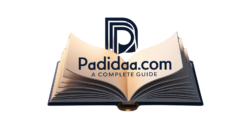📖 11th Botany Important Two Mark Questions 2025
📚 Score High with 11th Botany 2-Mark Questions!
This 11th Botany Two Marks Important Questions Guide is specially designed for Tamil Nadu 11th Public Exam 2025 students. It contains chapter-wise two-mark questions, carefully selected from previous year question papers, model exams, and textbook exercises. These frequently asked 2-mark questions help students cover essential concepts and definitions in a short and precise manner.
✔ Based on Tamil Nadu 11th Board Exam Syllabus
✔ Chapter-wise 2-Mark Questions with Answers
✔ Covers Definitions, Functions & Key Concepts
✔ Includes Previous Year Public Exam Questions
Most Important Three Marks
Draw and label the parts
- Draw and label the parts of the regions of the root.Ch3 – 3 times
- Draw and label stomata.Ch9 – 2 times
- Draw and label the parts of ‘regions of root’.Ch3
- Draw and label the structure of a Chromosome.Ch6
- Draw and label the parts of the ultrastructure of a plant cell.Ch6
- Draw and label the structure of Cycas rachis.Ch2
- Draw and label the diagram to show the different types of meristem based on their position in the plant body.Ch9
- Draw the structure of the nucleus with parts.Ch6
Most Repeated Three Marks
- Differentiate between aggregate fruit and multiple fruit. Ch4 – 3 times
- Write any three importances of Mycorrhizae.Ch1 – 3 times
- What is Amber? Which group of plants produces Amber?Ch2 – 3 times
- Write the properties of water.Ch8 – 2 times
- Give an account of the G₀ phase.Ch7 – 2 times
- Differentiate nodal and internodal cells of Chara.Ch2 – 2 times
- Differentiate between Sapwood and Heartwood.Ch10. – 2 times
- What is Plasmolysis?Ch11 – 2 times
- What is Tyloses?ch10 – 2 times
- What are sieve tube cells?Ch9 – 2 times
- List the functions of the nucleus. – 2 times
- Write any three physiological effects of Cytokinins.Ch15 – 2 times
- Differentiate between mitosis and meiosis.Ch7 – 2 times
- Write about the significance of mitosis.Ch7 – 2 times
- Write any three significances of mitosis.Ch7 – 2 times
- Define Archaebacterium. Give an example.Ch1 – 2 times
- Classify the lichens based on morphology.Ch1 – 2 times
- Write the properties of enzymes.Ch8 – 2 times
Chapter wise Important Three Marks
Chapter 1: Diversity of Living World
- Name the types of Mycelium found in Agaricus. (Ch1)
- Write the Gram’s staining procedure. (Ch1)
- Give a short note on Coenocytic mycelium. (Ch1)
- Write the types of mycelium present in Agaricus. (Ch1)
- Give a general account of lichens. (Ch1)
Chapter 2: Kingdom Plantae
- Do you think the shape of the chloroplast is unique for algae? Justify your answer. (Ch2)
- Define alternation of generation. (Ch2)
- Differentiate between gymnosperm and angiosperm. (Ch2)
- What are mitotic inhibitors? Give an example. (Ch2)
- List out the classes of algae. (Ch2)
- Describe the haplontic life cycle. (Ch2)
- What is coralloid root? Give an example. (Ch2)
Chapter 3: Morphology of Flowering Plants
- Write short notes on breathing roots. (Ch3)
- Explain about phylloclade. (Ch3)
- Differentiate pinnate unicostate venation from palmate multicostate venation. (Ch3)
- What is Runner? Give an example. (Ch3)
Chapter 5: Taxonomy of Angiosperms
- Artificial system of classification is also known as the sexual system of classification. Why? (Ch5)
- What is binomial nomenclature? Give an example? (Ch5)
- Differentiate taxonomy and systematics. (Ch5)
- Write any three uses of Herbarium. (Ch5)
Chapter 6: Cell Biology
- State the protoplasm theory. (Ch6)
- Write the functions of the cell wall. (Ch6)
Chapter 8: Biomolecules
- Write functions and deficiency symptoms of any two macronutrients. (Ch8)
- Write about the Lock and Key mechanism of Enzymes. (Ch8)
- What is a steroid? Give an example. (Ch8)
Chapter 9: Anatomy of Flowering Plants
- What is Protoxylem lacuna? (Ch9)
- Write any three functions of the Epidermal tissue system. (Ch9)
- Write the types of parenchyma. (Ch9)
Chapter 10: Secondary Growth
- Differentiate between spring wood and autumn wood. (Ch10)
Chapter 11: Transport in Plants
- How does phosphorylase enzyme open the stomata in starch-sugar interconversion theory? (Ch11)
- What is transpiration? Write its types. (Ch11)
Chapter 12: Mineral Nutrition
- What are Unclassified minerals? Give examples? (Ch12)
- Nitrogen is present in the atmosphere in huge amounts, but higher plants fail to utilize it. Why? (Ch12)
Chapter 13: Photosynthesis
- What are dimorphic chloroplasts? In which group of plants are these found? (Ch13)
- Differentiate between cyclic and non-cyclic photophosphorylation. (Ch13)
Chapter 14: Respiration and Metabolism
- Give any three significances of the pentose phosphate pathway. (Ch14)
- Why is the Krebs cycle called an amphibolic pathway? (Ch14)
Chapter 15: Growth and Development
- Write the significance of abscission. (Ch15)
- Write any three physiological effects of auxin. (Ch15)
- What is senescence? Write their types. (Ch15)
